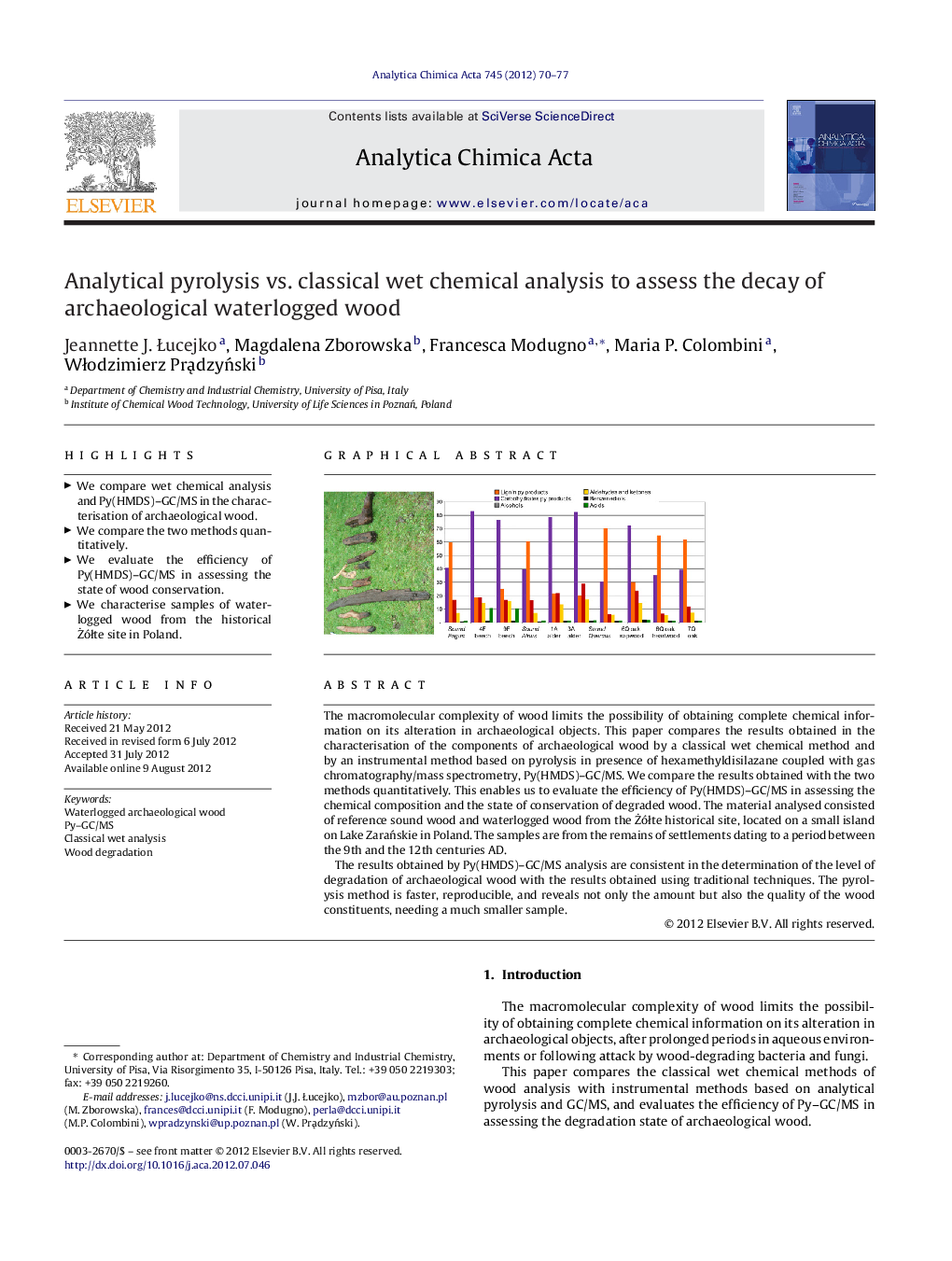| Article ID | Journal | Published Year | Pages | File Type |
|---|---|---|---|---|
| 1165703 | Analytica Chimica Acta | 2012 | 8 Pages |
The macromolecular complexity of wood limits the possibility of obtaining complete chemical information on its alteration in archaeological objects. This paper compares the results obtained in the characterisation of the components of archaeological wood by a classical wet chemical method and by an instrumental method based on pyrolysis in presence of hexamethyldisilazane coupled with gas chromatography/mass spectrometry, Py(HMDS)–GC/MS. We compare the results obtained with the two methods quantitatively. This enables us to evaluate the efficiency of Py(HMDS)–GC/MS in assessing the chemical composition and the state of conservation of degraded wood. The material analysed consisted of reference sound wood and waterlogged wood from the Żółte historical site, located on a small island on Lake Zarańskie in Poland. The samples are from the remains of settlements dating to a period between the 9th and the 12th centuries AD.The results obtained by Py(HMDS)–GC/MS analysis are consistent in the determination of the level of degradation of archaeological wood with the results obtained using traditional techniques. The pyrolysis method is faster, reproducible, and reveals not only the amount but also the quality of the wood constituents, needing a much smaller sample.
Graphical abstractFigure optionsDownload full-size imageDownload as PowerPoint slideHighlights► We compare wet chemical analysis and Py(HMDS)–GC/MS in the characterisation of archaeological wood. ► We compare the two methods quantitatively. ► We evaluate the efficiency of Py(HMDS)–GC/MS in assessing the state of wood conservation. ► We characterise samples of waterlogged wood from the historical Żółte site in Poland.
